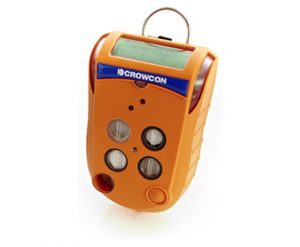If you use a personal safety gas detector in your job, you need to be aware that confined space accidents happen when gas detection readings are incorrect. Testing incorrectly could be the difference between life and death!
Tanks, silos and sewers are easily identified as confined spaces. Others may not be so obvious, for example, manure pits and unventilated or poorly ventilated rooms.
Without proper training and an understanding of gas hazards, these are key contributing factors to confined space accidents. Awareness of potential hazards is essential to any confined space safety program and testing the atmosphere with an appropriate, properly functioning gas detector is the only way to determine whether it is safe to enter.
According to Crowcon, the following instructions should be observed when using our instruments in Pumped or Manual Sampling modes;
• It is strongly recommended before proceeding that a function check is performed using the pump and sample tube with the gas/vapour to be detected.
• To reduce the risk of absorption of the gas/vapour in the sample tube, ensure the temperature of the sampling tube is above the flash-point temperature of the target vapour.
• Ensure the monitor is correctly calibrated for the target gas/vapour.
• Only use the sample tube supplied by Crowcon. It is strongly recommended that ‘reactive gas tubing’ (part no.: AC0301) is used for sampling gases/vapours that are likely to be adsorbed (examples: toluene, chlorine, ammonia, hydrogen sulphide, ozone, hydrogen chloride NOx etc).
• Keep the sample tube length as short as possible.
Bump Test
Prior to entry, a bump test must be carried out to confirm that the gas detector is functioning. Unfortunately, even though the gas detector performs diagnostic checks at start-up and during operation, it is often not possible to electronically detect a problem with sensor response.
Your gas detector cannot warn you that sensor ports are obstructed by oil, dirt, or another substance, or whether the catalytic bead of a combustible sensor has been poisoned.
The only way to confirm that a gas detector is functioning, and is capable of responding to gas, is to expose the instrument to a concentration of target gas high enough to initiate an alarm situation while the instrument is in operating mode.
This procedure is often referred to as performing a bump test and it is a key to the safe use of portable safety gas detection equipment.
Pre-Entry Testing
Your gas detector needs to have a sampling pump. Pumped gas detectors can be used to sample locations at a distance from the detector via a sampling tube and sampling probe. This allows the worker to be located outside of the confined space but draw air from inside.
It is essential to sample air at various levels from floor to ceiling because some gases are heavier than others. The person taking the sample must allow sufficient time for the internal pump to pull the gas/vapour through the tubing to the gas detector sensor. Allow at least 3 seconds per metre plus the normal T90 response time of the sensor (typically 30-40 seconds).
Continuous Testing
After a confined space has been cleared for entry, it is essential for workers to monitor continuously the space. Atmospheric conditions can change without warning! Work activities in confined spaces such as painting and hot work can produce dangerous atmospheric conditions.
Workers must trust their portable safety gas detector to warn them of possible life-threatening atmospheric gas hazards. Serious injury or death can be caused by exposure to toxic gases, oxygen-deficient environments or explosions caused by the presence of combustible gases.
Download Crowcon’s Technical Note – GEN103 – Pumped sampling of gases
Crowcon’s Gas-Pro simplifies confined space access with an intuitive confined space pre-entry checking feature.
When used in larger fleets, manage your Gas-Pro detectors with ease using the I-Test bump and calibration solution.
Gas-Pro gives the flexibility to detect up to 5 gases with a wide range of toxic and flammable gas types using IR and PID sensor options. The Gas-Pro is a compact, rugged IP65 & IP67 device capable of withstanding harsh industrial environments and everyday use.





